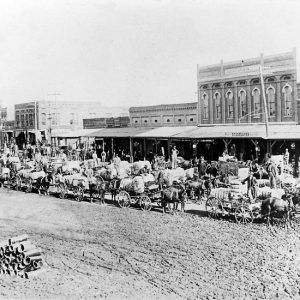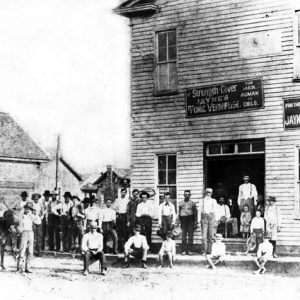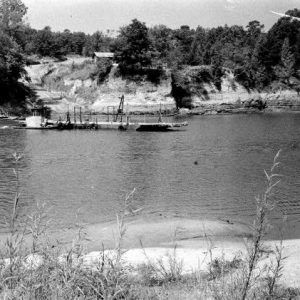calsfoundation@cals.org
Faulkner County
| Region: | Central |
| County Seat: | Conway |
| Established: | April 12, 1873 |
| Parent Counties: | Conway, Pulaski |
| Population: | 123,498 (2020 Census) |
| Area: | 647.25 square miles (2020 Census) |
| Historical Population as per the U.S. Census: | |||||||||
|
1810 |
1820 |
1830 |
1840 |
1850 |
1860 |
1870 |
1880 |
1890 |
1900 |
|
– |
– |
– |
– |
– |
– |
– |
12,786 |
18,342 |
20,780 |
|
1910 |
1920 |
1930 |
1940 |
1950 |
1960 |
1970 |
1980 |
1990 |
2000 |
|
23,708 |
27,681 |
28,381 |
25,880 |
25,289 |
24,303 |
31,578 |
46,192 |
60,006 |
86,014 |
|
2010 |
2020 |
|
|
|
|
|
|
|
|
|
113,237 |
123,498 |
|
|
|
|
|
|
|
|
| Population Characteristics as per the 2020 U.S. Census: | ||
| White |
94,088 |
76.2% |
| African American |
14,384 |
11.6% |
| American Indian |
719 |
0.6% |
| Asian |
1,475 |
1.2% |
| Native Hawaiian or Other Pacific Islander |
73 |
0.1% |
| Some Other Race |
3,337 |
2.7% |
| Two or More Races |
9,422 |
7.6% |
| Hispanic Origin (may be of any race) |
6,790 |
5.5% |
| Population Density |
190.8 people per square mile |
|
| Median Household Income (2019) |
$52,827 |
|
| Per Capita Income (2015–2019) |
$26,913 |
|
| Percent of Population below Poverty Line (2019) |
16.7% |
|
Faulkner County was one of the last counties formed in the state of Arkansas. Sparsely populated in its early years, it had become the fifth-most-populous county in the state by 2020. Faulkner County is home to the University of Central Arkansas (UCA), Hendrix College, and Central Baptist College. Lake Conway, a large man-made lake, lies in the southern part of Faulkner County. Much of the county consists of rolling hills and river valleys, but flat prairie lands can be found in the northern part.
European Exploration and Settlement
The first European explorers in the area were the group traveling with Jean-Baptiste Bénard de La Harpe, who traveled up the Arkansas River from Arkansas Post (Arkansas County) in 1722. A fur trader named John McIlmurry lived in the area where Cadron Creek empties into the Arkansas River around 1810. The Standlee family was one of several who moved to the area from the New Madrid district following the earthquakes of 1811–1812; family tradition claims that John Standlee of Kentucky had already explored the area more than thirty years earlier.
Louisiana Purchase through Early Statehood
Around 1810, Richard Montgomery established the first store in the area. John C. Benedict arrived in the spring of 1811 with his family. Soon thereafter, a ferry was established to cross the river. The ferry crossing was named “Toad Suck,” a name which has prompted a variety of explanations. One common story is that the ferry was named for tavern patrons who “sucked on a bottle until they swelled like a toad,” but other researchers note that a “suck” is a river whirlpool that needs to be marked and avoided by travelers.
In 1820, a post office was established at the growing settlement, named Cadron. Mills operated by the Stanley family led to more growth of the community of Cadron in the 1820s. The Arkansas legislature moved the county seat of Pulaski County to Cadron in 1820, but it was moved to Little Rock (Pulaski County) the following year. Cadron served as the county seat of Conway County from 1825 to 1829, when the territorial legislature moved it to Harrisburg.
The northwest section of Faulkner County was included in a Cherokee reservation between 1818 and 1828. The Arkansas River Valley was a major route for the Trail of Tears during the 1830s. For a time, Cadron was a major stopping point on the route. Many Native Americans died from cholera and were buried in Cadron in early 1834. Fear of the disease caused many settlers to abandon Cadron; no community now exists in that location, although there is a popular recreation area there at Cadron Settlement Park.
Other extant communities began as settlements before or during the Civil War. Enola was settled as early as 1840. The community of Greenbrier began in 1853 and was first named Mooresville. Vilonia, now the third-largest town in Faulkner County, began to be settled in the 1860s; by 1870, it had a cotton gin and a grist mill.
Civil War through Reconstruction
At least 123 men from what is now Faulkner County served in the Confederate army during the Civil War. Captain John William Duncan assembled a company of volunteers in Springfield (Conway County). Many of the fighters from Faulkner County served in the Tenth Arkansas Regiment.
Following the occupation of central Arkansas by Union forces in 1863, some soldiers from Faulkner County enlisted in the Union army. Others served as guerrilla fighters for the Confederacy. Although numerous minor skirmishes happened in the area, no major battles were fought.
Following the war, railroads built across Arkansas led to the formation of the new county. A New York surveyor, Colonel Asa Hosmer Robinson, came to the area in 1869. Robinson established Conway Station on the Little Rock and Fort Smith Railroad and purchased and surveyed the land surrounding that station. Faulkner County, created on April 12, 1873, was one of nine counties established by the Republican state legislature during Reconstruction. Although some opposition to it existed, votes were encouraged by the promise to name the new county for the popular Colonel Sanford “Sandy” Faulkner. Colonel Robinson offered Conway Station as the new county seat. Conway was formally incorporated on October 16, 1875.
Post Reconstruction through the Gilded Age
The growth of the railways brought more settlers into the new county, including many immigrants from Europe. Father Joseph Strub of the Holy Ghost Fathers mission society brought in Roman Catholic settlers from Germany beginning in 1878. The St. Joseph Colony was originally headquartered in Conway, but in 1879, the headquarters were moved to Morrilton (Conway County). About 100 German Catholic families lived in the Conway area.
Conway continued to grow under the leadership of entrepreneurs including Max Frauenthal, who established his store in Conway in 1872. Much of the downtown area was destroyed by fire in 1878 but was quickly rebuilt.
A mineral spring called Pinnacle Springs, in northeast Faulkner County (between Greenbrier and Damascus), was discovered in 1880. Pinnacle Springs became a boom town, but interest had peaked by 1885. Arkansas Christian College was established there at that time; it graduated its first and only class in 1890. After the college closed, the community was abandoned with the same speed with which it had grown.
Arkansas Holiness College operated in Vilonia from 1904 until 1931 when it was forced to consolidate with an institution in Oklahoma. The college included education for primary, elementary, and secondary students, as well as two- and three-year college degrees.
Other colleges have proven far more durable. Hendrix College—first known as Central Institute—was established in Altus (Franklin County) in 1876, but the school relocated a decade later to Conway. Central College for Women, an institution affiliated with the Southern Baptist denomination, began in Conway in 1892. The school moved to Camp Joseph T. Robinson in 1947, but the campus was purchased by the Arkansas Baptist Missionary Association; the school was reopened in 1952 as Conway Baptist College, now Central Baptist College.
Arkansas State Normal College was established in Conway in 1907. In 1925, the name was changed to Arkansas State Teachers College (ASTC). It became the University of Central Arkansas (UCA) in 1975.
The late nineteenth century saw several incidents of extra-judicial violence in the county, including at least three lynchings, two of which were directed against African Americans. Tom Wilson allegedly attacked a white woman in 1885, leading to his hanging by a group of masked men. In 1905, Frank Brown allegedly attacked a white woman and her children near Conway, leading to the death of one child. A group took him from the jail and hanged him near the scene of the crime. Albert England, a white man accused of burglary, was killed by a group of citizens in 1895.
Early Twentieth Century
In 1906, a 200-acre orchard grew peaches, apples, and grapes in the southeast portion of Faulkner County; it finally went out of business during the Depression. Cotton farming also peaked in Faulkner County before the Depression.
By 1918, there were 115 schools in the county. Greenbrier began the process of consolidating school districts in 1927, and by the end of the 1930s, only seven school districts existed in the county.
In April 1927, Faulkner County (like many other places in Arkansas) was afflicted by flooding. Conway was isolated, and its residents received no mail for three weeks. The flood left 250 families homeless and killed one person.
The Young Memorial, located on the campus of Hendrix College and unveiled in 1920, honors six former students of the college who died in World War I.
In 1933, Dave Ward, who owned a blacksmith shop in Conway, was asked to construct buses for the school system. The Ward Bus Company built a plant of 10,000 square feet in 1939, which eventually grew to 100,000 square feet. After several sales and name changes, the company is now known as the IC Corporation and is based in Illinois. Production in Conway ceased in 2010 and the site is now owned by a metal products supplier.
World War II through the Faubus Era
During World War II, ASTC became a temporary home to various branches of the armed forces. The Naval Cadets, Army Air Corps, Army National Guard, and Women’s Army Corps (WAC) turned the quiet college campus into a veritable military base. The WAC had the largest contingent of personnel, with 1,800 women being trained from March 1943 to March 1944. The influx of students utilizing the GI Bill after the war led to a large number of families living on the ASTC campus. The college recognized the accomplishments of both the parents and their children with the awarding of the Baby of Arts degree.
Faulkner County had been a “dry” county (meaning that the sale of alcohol is illegal) since the end of 1888. When the Eighteenth Amendment, which made Prohibition a national law, was repealed in 1933, Faulkner County citizens began a ten-year debate about the serving of alcohol. Since 1943, Faulkner County has been a dry county.
Construction of Lake Conway began in 1950. At 6,700 acres, Lake Conway is the largest man-made lake in the nation overseen by a state Game and Fish Commission. The mythical Lake Conway Monster supposedly lives in the body of water.
In 1960 and 1961, the 308th Strategic Missile Wing constructed five missile silos in Faulkner County, containing Titan II missiles armed with nuclear warheads. The silos continued to be maintained until the missiles were deactivated late in the 1980s.
School integration in Faulkner County did not occur until after the Civil Rights Act of 1964. The Greenbrier school system was integrated by its school board in 1965, when they had 642 white students and thirty-three Black students. Integration in Conway resulted in the closing of the Pine Street School in 1970, which had served Black students since 1938. Full integration was not achieved in Conway until 1968; in fact, separate bus routes were run for white and Black students until 1965.
Guy “Mutt” Jones represented the county along with other nearby areas in the state senate for more than twenty years. His influence led to the establishment of several state facilities based in the county, including the Conway Human Development Center and the studios for Arkansas PBS.
Modern Era
The Toad Suck Lock and Dam were completed in 1969. Named for the ferry that had operated on that part of the Arkansas River, the dam also includes a bridge across the river, replacing the ferry that had operated off and on since the 1820s.
The 2020 Census lists Faulkner County with 123,498 citizens, making it the sixth-most-populous county in Arkansas. The population is predominantly urban, with many residents commuting to jobs in Pulaski County, although the county is also home to numerous farms. Crops include some rice near the river, as well as soybeans and sorghum; many of the farms raise beef cattle and hogs, and—in the northern part of the county—dairy cows. Smaller communities in the county include Guy, Wooster, Holland, Mount Vernon and Twin Groves.
Conway has celebrated Toad Suck Daze since 1982, when over 25,000 people attended the first festival. Now, the festival regularly attracts more than 100,00 people to the community for music, food, games, sporting events, and other entertainment. Woolly Hollow State Park, located near Greenbrier, opened in 1973. Bell Slough Wildlife Management Area is located in southern Faulkner County. Numerous locations throughout the county are listed on the National Register of Historic Places, including the Faulkner County Courthouse, the Hendrix College Addition Neighborhood Historic District, and the Springfield–Des Arc Bridge, the oldest bridge in the state, which was moved to Lake Beaverfork Park in 2017. Other attractions have included Riddle’s Elephant and Wildlife Sanctuary, which closed sometime around 2020.
For additional information:
Biographical and Historical Memoirs of Central Arkansas. Chicago: Goodspeed Publishing Co., 1889.
Faulkner County Historical Society. http://www.faulknerhistory.com/ (accessed April 12, 2023).
Faulkner County Historical Society. Faulkner County: Its Land and People. Conway, AR: Faulkner County Historical Society, 1986.
Faulkner Facts and Fiddlings. Conway, AR: Faulkner County Historical Society (1959–).
Gatewood, Robert L. Faulkner County, Arkansas, 1778–1964. Conway, AR: The Faulkner Press, 1964.
McPherson, Alex. The History of Faulkner County, Arkansas. Conway, AR: Conway Times Plant, 1927.
Pauly, Roger. Historic Faulkner County: An Illustrated History. Historical Publishing Network, 2011.
A Pictoral History of Faulkner County, Arkansas. Marceline, MO: Heritage House Publishing Company, Inc., 1991.
Walter, Paulette H., and Alan C. Paulson. Images of America: Historic Faulkner County. Charleston, SC: Arcadia Publishing, 1999.
Steven Teske
North Little Rock, Arkansas
Revised 2022, David Sesser, Henderson State University
 Acxiom Hall, Hendrix College
Acxiom Hall, Hendrix College  Arkansas Educational Television Network (AETN)
Arkansas Educational Television Network (AETN)  Arkansas Holiness College
Arkansas Holiness College  Beaverfork Park Entrance
Beaverfork Park Entrance  Cadron Blockhouse
Cadron Blockhouse  Cadron Gap Store
Cadron Gap Store  Cadron Settlement Marker
Cadron Settlement Marker  Cadron Settlement: Harris Family Gravesite
Cadron Settlement: Harris Family Gravesite  Central Baptist College
Central Baptist College  Conway Cotton Wagons
Conway Cotton Wagons  Conway Train Depot
Conway Train Depot  Cove Creek Natural Area
Cove Creek Natural Area  Faulkner County Courthouse
Faulkner County Courthouse  Faulkner County Map
Faulkner County Map  Faulkner County Museum
Faulkner County Museum  Lake Bennett
Lake Bennett  McCracken Drug Store
McCracken Drug Store  Railroad Tunnel
Railroad Tunnel  Shoeing Mules
Shoeing Mules  Springfield-Des Arc Bridge
Springfield-Des Arc Bridge  Toad Suck Daze Mural
Toad Suck Daze Mural  Toad Suck Daze
Toad Suck Daze  Toad Suck Ferry
Toad Suck Ferry  University of Central Arkansas (UCA)
University of Central Arkansas (UCA)  Vilonia High School
Vilonia High School  Woolly Cabin
Woolly Cabin  Wooster Post Office
Wooster Post Office 




Cato is in that area and was a thriving historical community of Faulkner County until in 1940 when Camp Robinson was expanded to take the thousands of acres of land on three sides of the town and forced a large part of the community to move away. Cato is just across the border of Pulaski County, but the main part was and is in Faulkner County. It is currently regrowing quickly.
I’m wondering why Faulkner County’s south border has a teardrop area dipping into Pulaski County.